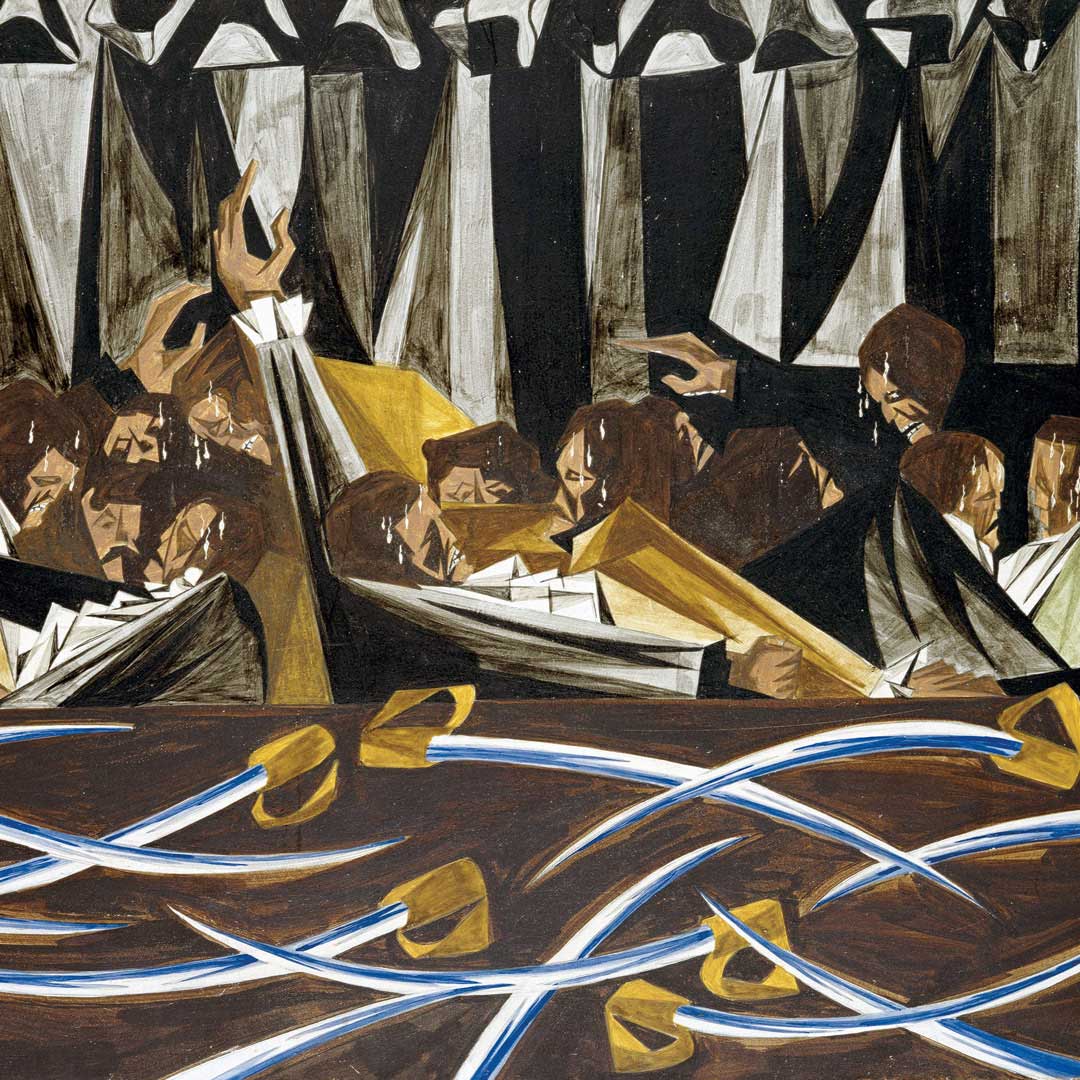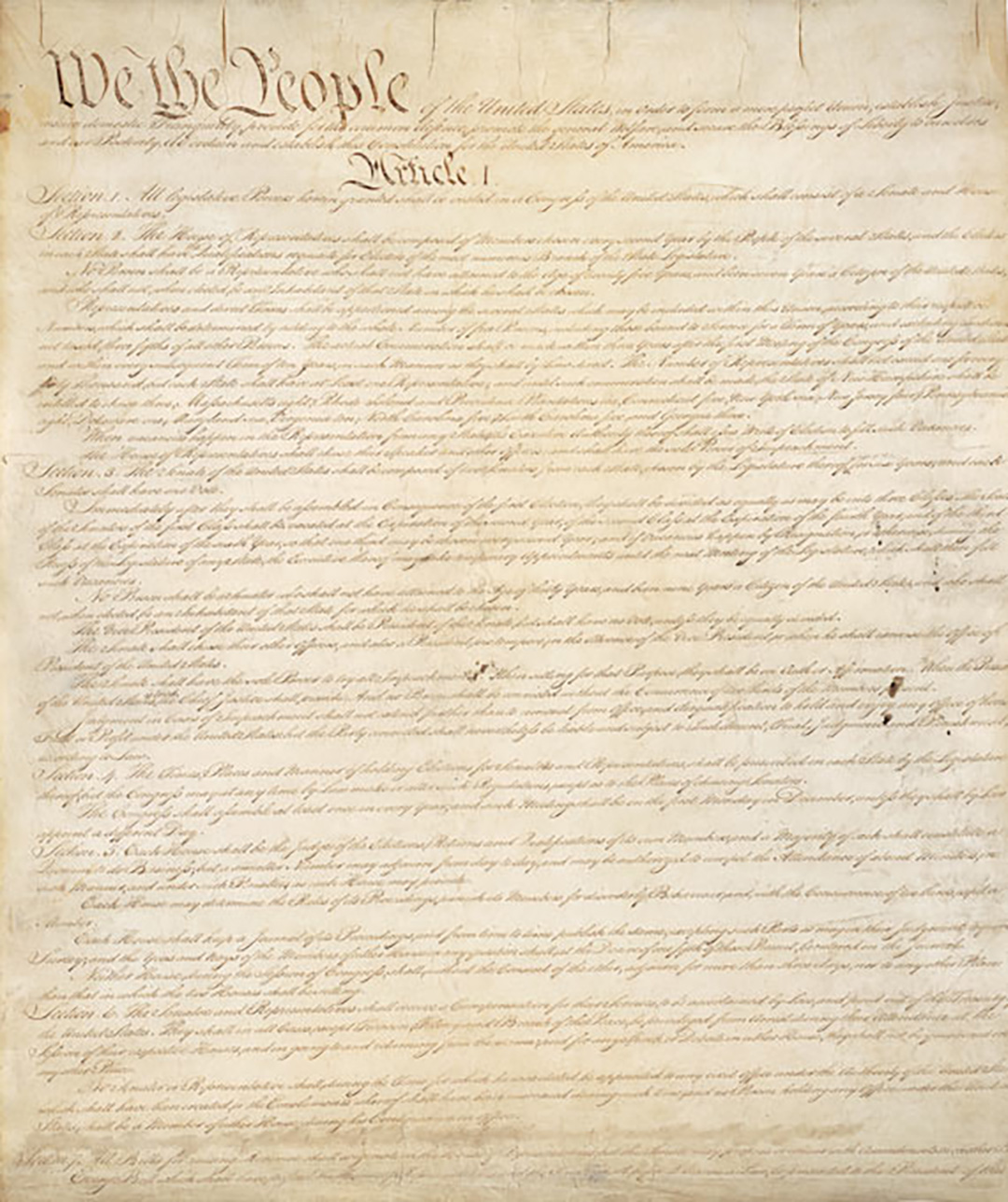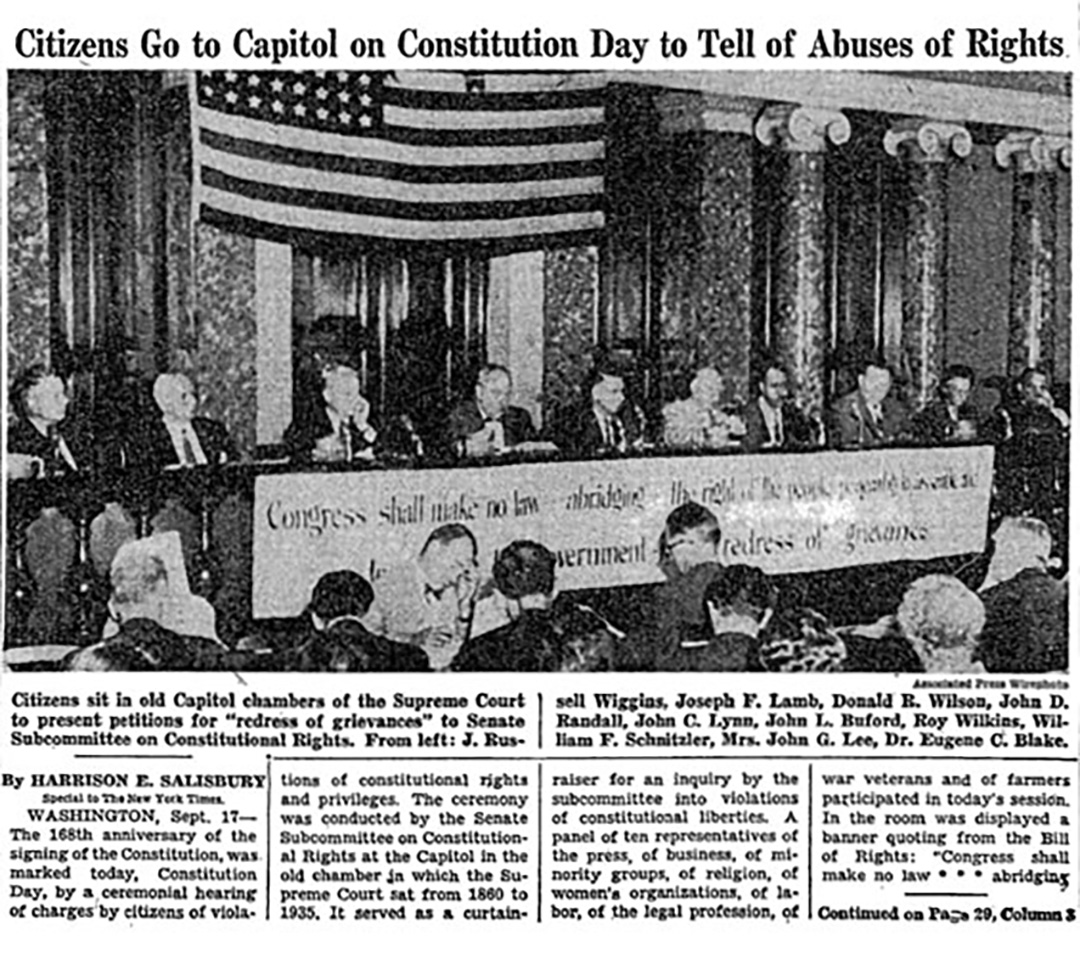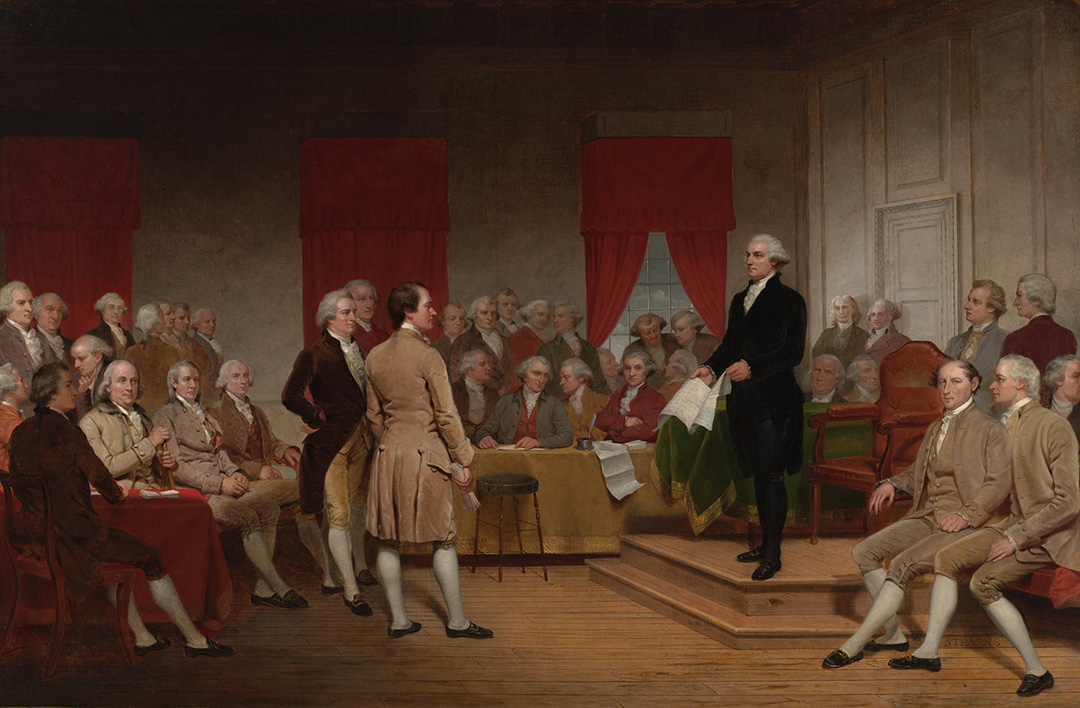
Panel 15
We, the people of the United States, in order to form a more perfect Union, establish justice, insure domestic tranquility . . . —17 September 1787, Panel 15, 1955, Inscription: “CREATION”, Jacob Lawrence, from Struggle: From the History of the American People, 1954–56, Harvard Art Museums/Fogg Museum, Francis H. Burr Memorial Fund, Richard Norton Fund, Henry George Berg Bequest Fund, Anonymous Fund in memory of Henry Berg, and Alpheus Hyatt Fund, 1995.23, © 2019 The Jacob and Gwendolyn Knight Lawrence Foundation, Seattle / Artists Rights Society (ARS), New York.


